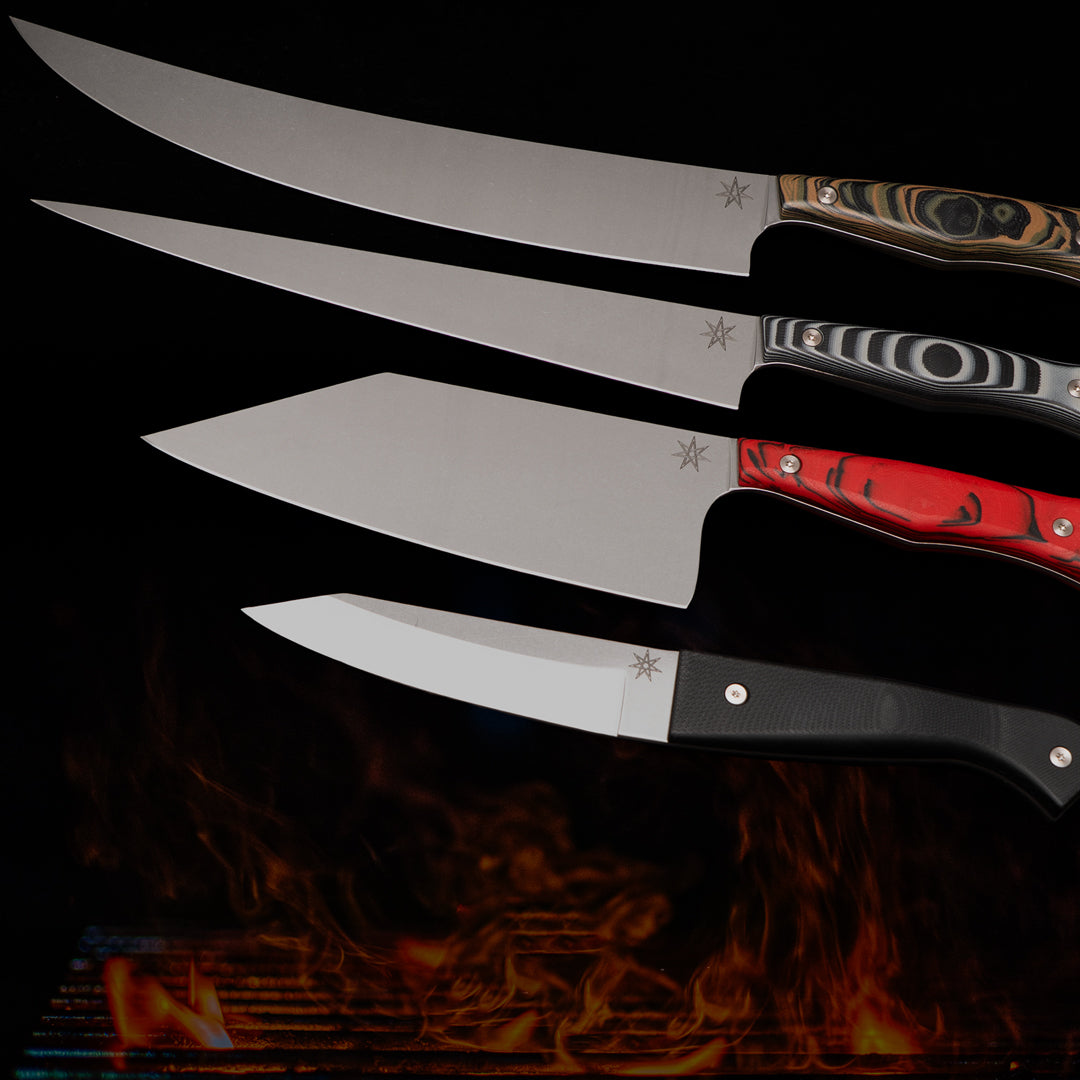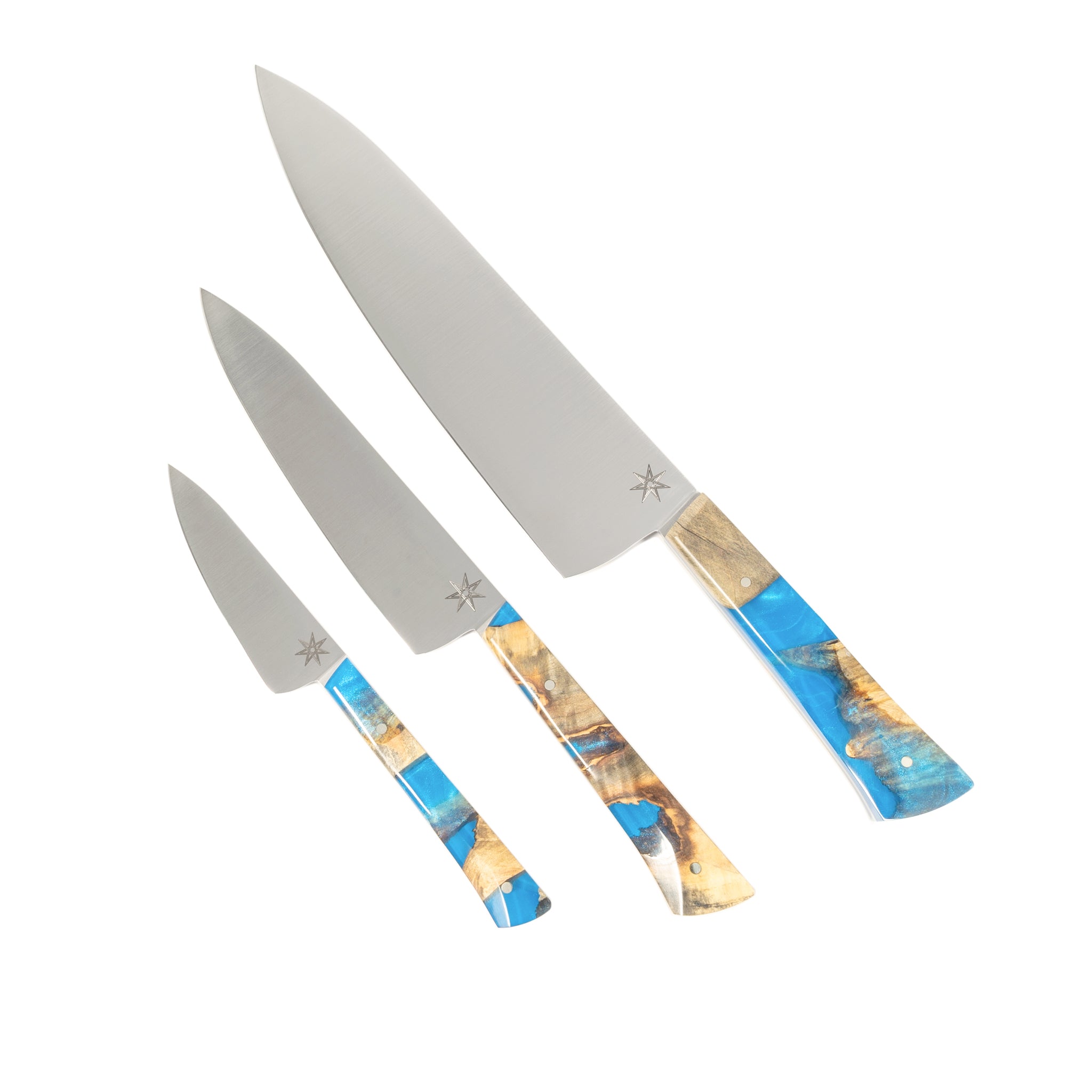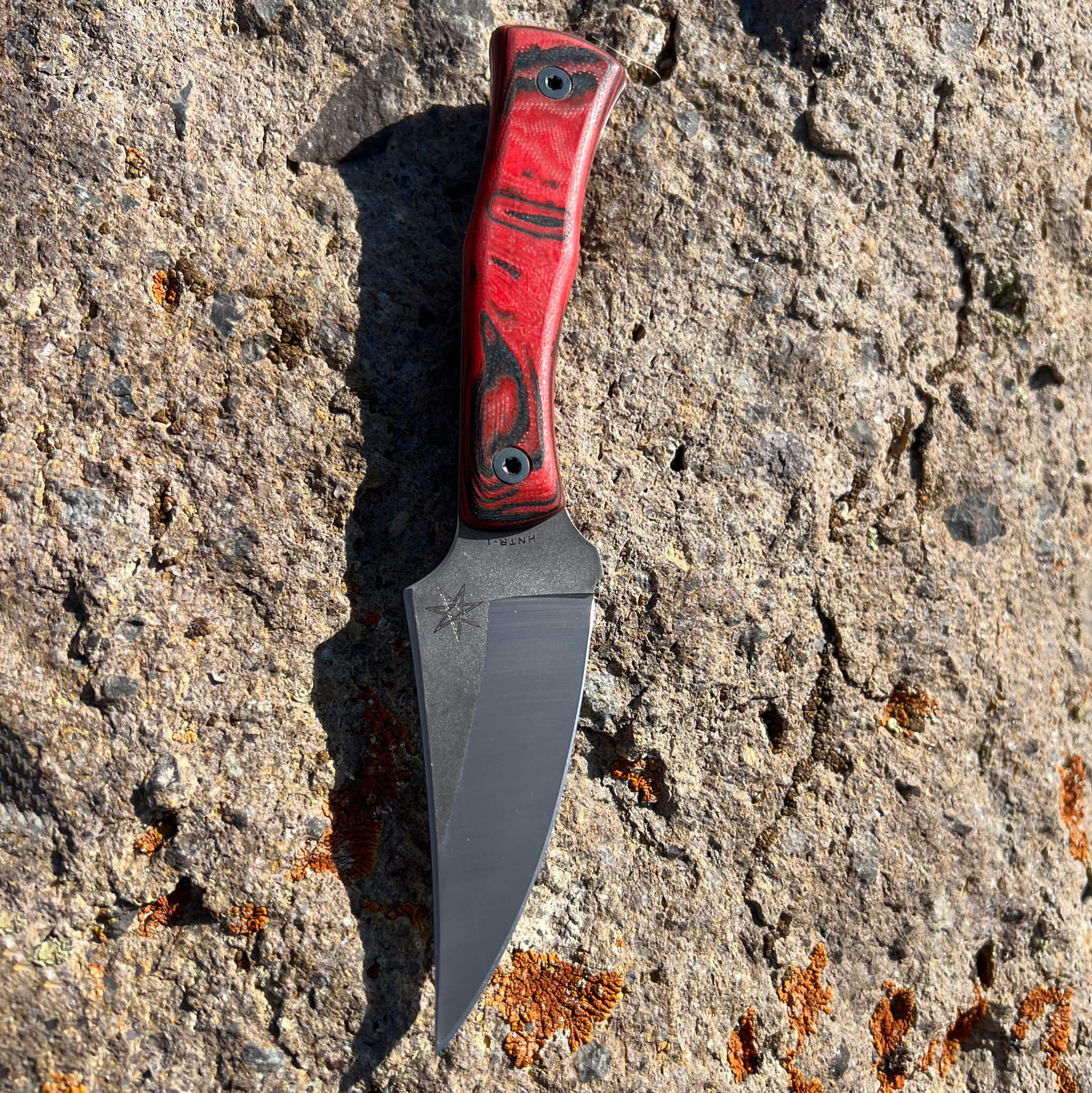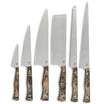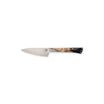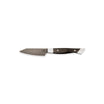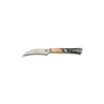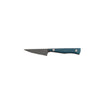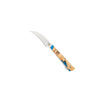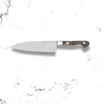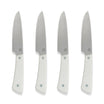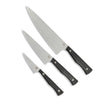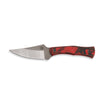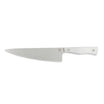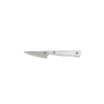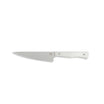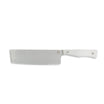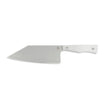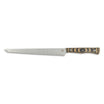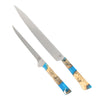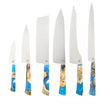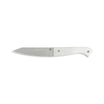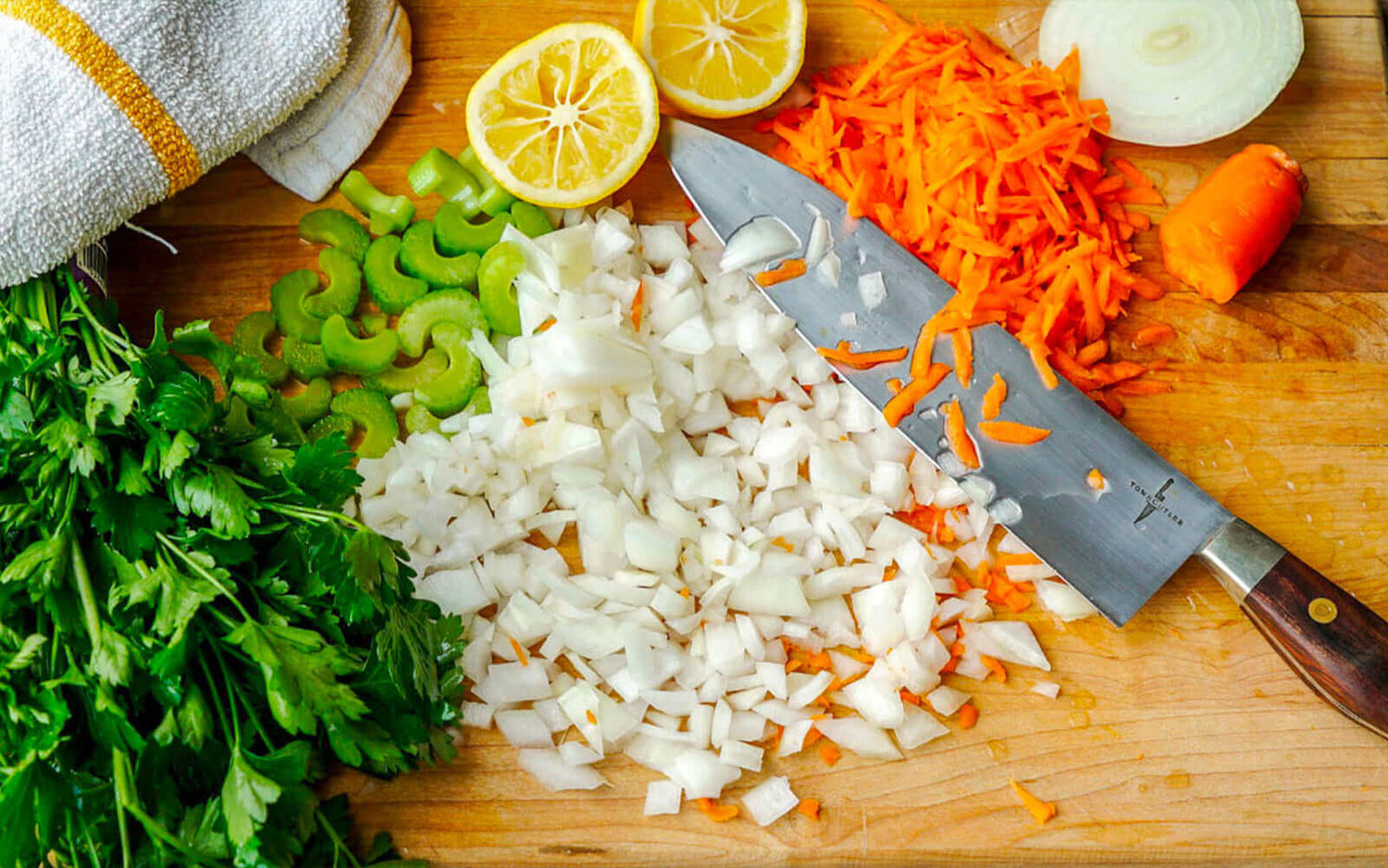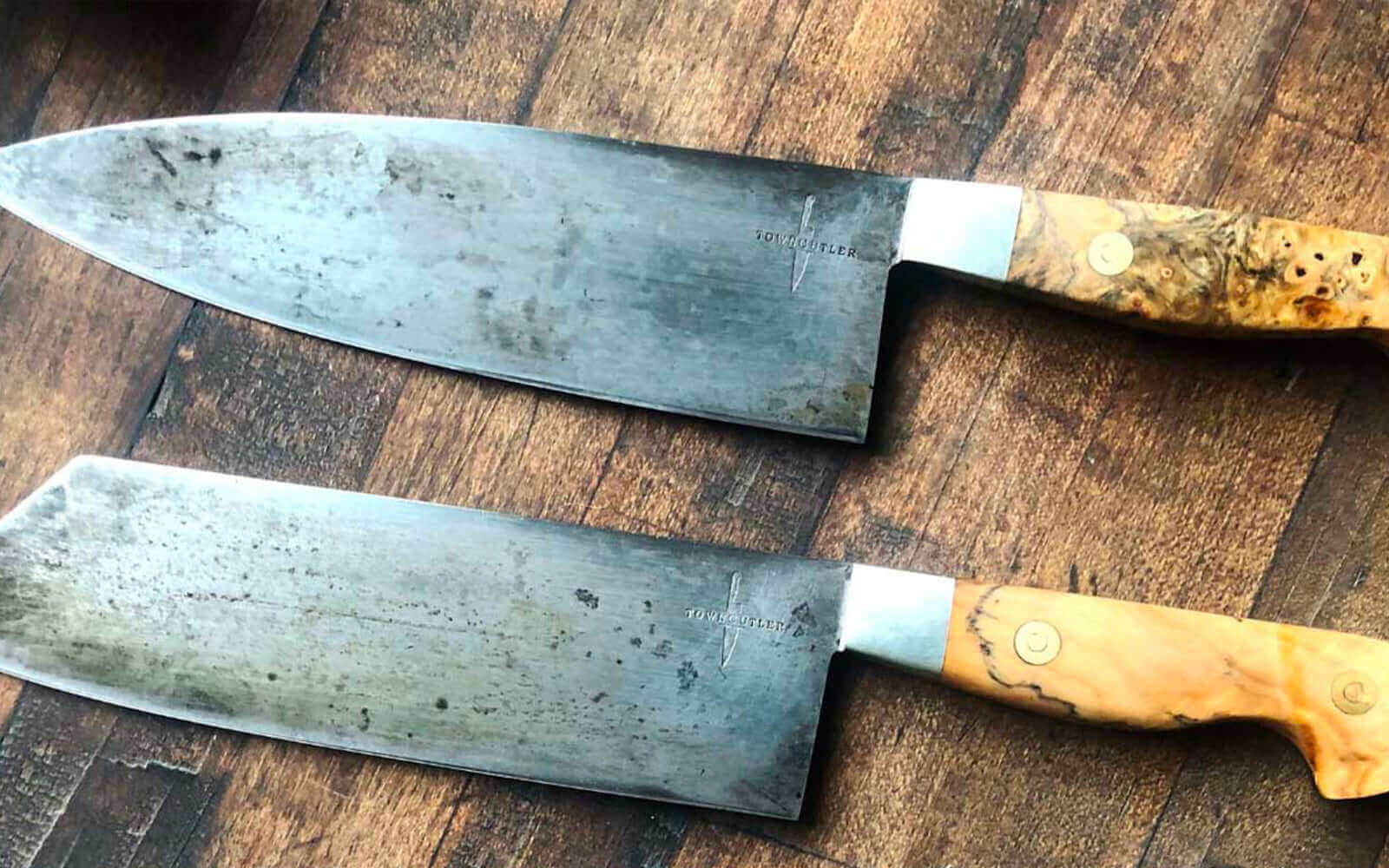Carbon vs Stainless Steel Knives: How to Choose the Right One
As consumers, we are faced with an array of choices. We sometimes commit to something without truly knowing what we are getting, and if it’s the best choice, or rather, the right choice for us. We are here to alleviate some of that uncertainty when it comes to deciding between carbon and stainless steel knives. We often describe the two steels to our customers as having two different personalities – neither is better than the other; instead, the right choice of steel is the one that works for you and your lifestyle. We also talk about steel choice as being similar to preferring cast iron or non-stick pans, manual or automatic transmission, or listening to music on vinyl or digitally. Either option will achieve the intended goal, but based on an individual’s priorities, preferences, and lifestyle, they’ll choose one over the other.
The Basics
Stainless steel knives are what people are most familiar with and likely was the steel of your very first knife. It’s a little bit lower maintenance, in that it requires less upkeep (no oiling the blade) and is not as sensitive to different products, such as acids (tomatoes, lemons, onions, etc.) With proper care, your stainless steel knife should more or less look and function the same as the first day you received it.
Carbon steel has a higher carbon content and is, therefore, more reactive than stainless steel, which means it will change over time. Carbon steel blades have a “break-in” period, during which the initial care of the blade is crucial but will set you up nicely for the rest of its life. This “break-in” period is similar to that of a cast iron pan, which needs to be seasoned. With a new carbon steel knife, it is essential to keep the blade dry and oiled when not in use and avoid cutting a lot of acidic product. This doesn’t mean you can’t cut lemons or onions, it just means that you need to be diligent about cleaning and drying your knife afterward while the patina is still forming. Over time a patina develops on the blade, which changes its appearance but also creates a protective layer that acts as a non-stick layer when cutting through product. Carbon steel blades aren’t high-maintenance, they are just initial maintenance specific.
Should I Get a Carbon or Stainless Steel Knife?
When deciding between the two steels, it’s important to be honest with yourself about how you want to use your knife and care for it. Think about how your kitchen or cutting board looks while you’re cooking. Are you a meticulous person who cleans as they go and likes their workspace to be tidy and dry? Or is your cooking style a little more haphazard, where your cutting board is wet with a mix of product, and maybe your knife doesn’t get cleaned until after dinner? The way you work in the kitchen can be one of the most important sources of information when deciding between carbon and stainless steel.
Is this what you're cutting board looks like?

Or does it look more like this?

Regarding steel choice, why do things like moisture, acidity, and the tidiness of my workspace matter? While both “types” of steel are capable of rusting and discoloration, carbon steel is far more reactive to acids and moisture. With a carbon steel knife, we want a patina to form on the blade surface and act as a protective barrier; however, other changes to the steel can be harmful. If a carbon steel knife is exposed to acid without a protective patina in place, or over a long period of time, the reaction to the steel will be corrosive and will not only change the façade of the blade but will permeate the steel itself. Similarly, since carbon steel is more susceptible to moisture, if not thoroughly dried, or left sitting on a wet cutting board, the steel will begin to rust. This is not to say that you cannot cut acidic food with a carbon steel knife or that you need to be anxiety stricken about washing and drying your knife. It also does not mean that stainless steel is impervious to corrosion. Rather, it is important to think about how you work so that you’re setting your knife up for the best possible life.
Carbon and stainless steel are both capable of making excellent knives that are durable and can get very sharp. When purchasing a new knife, we suggest thinking about how you work and how much you want to care for your knife while using it, because in the end, the right knife is the one that you’re going to use. So, if you’re naturally a little more meticulous in the kitchen and the kind of person who is willing to have a little patience at the beginning of a products life for a good return, try carbon steel. If you want to unpack and go, or know you’ll accidentally leave your knife in the kitchen sink (even though you know better), stainless might be a better option for you. We like to keep a mix of carbon and stainless steel knives in the kitchen for different applications, which we’ll explore in next month’s post. All in all, we don’t think one steel is “better” than the other. It all depends on what the nature of your project is and what kind of “knife person” you are.

